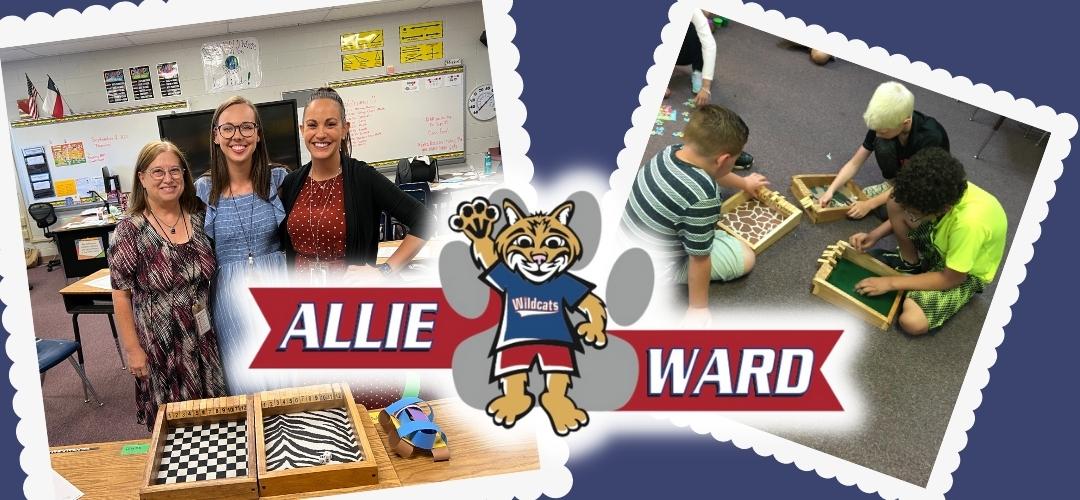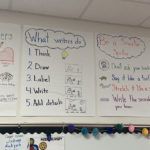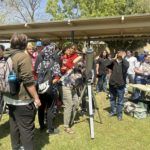Before the COVID-related shutdown of schools in March 2020, former Cooper High School construction teacher Glen Freeman had an idea that he intended to market to local teachers that would assist them in teaching math and language arts.
Then COVID hit and the now-retired Abilene ISD teacher put the product on hold.
But when schools opened again in August 2020, Freeman’s idea was revived. Last year, his “Shut the Box” game made its way to Ward Elementary School where it was put into use by fourth-grade math and reading teachers. Current Cooper Family and Consumer Sciences teacher Cheryl Barber took the idea to her class and then to Ward where it has become a big part of instruction in those two classes.
The game aids math teachers with addition, subtraction, multiplication, and division, and helps reading teachers by allowing students to use their imaginations to create 3D models. Last spring, Cooper students in the Texas Association of Future Educators (TAFE) program took them to Ward and, using a lesson plan, taught the students how to use the games. Ward now has 48 “Shut the Box” games for teachers to use at any given time.
“This project was exciting because so many people had a hand in it,” Barber said. “We had Mr. Freeman and his construction students, along with my students, and their ideas for using them. And then the Ward teachers were so great to allow us to go over there and share the games with their students.
“My students were able to come up with creative ways to use the games for math practice, and with recommendations from the Ward faculty, we worked with second-and third-grade students playing and practicing math with the games,” she said. “And we did work with the English and reading classes the same day, leading an art project and poetry activity.”
These games are part of an all-out assault on the COVID-related learning loss students have endured since the shutdown two years ago. And they’re having the desired effect on students at Ward.
“These students know they’re behind, and sometimes they shut down,” said Connie Darden, a fourth-grade math teacher at Ward. “And rather than have anyone know they need help or don’t know the answer, they shut down or cause disruption by being the class clown. These tools, though, help because everyone can play the game, and when you’re playing the game it’s not as embarrassing when you the wrong answer.”
Morgan Alvarenga, who also teaches fourth-grade math at Ward, said she has continued to use the game to strengthen her student’s ability to think outside the box.
“I want them to think about numbers and the different things they can do with them, and the results they can get each time,” she said. “It’s not just adding or subtracting numbers each time, but it’s different usages of those numbers. The big thing I’m seeing is that it motivates them to try different strategies and think more in-depth about the numbers. I believe it pushes them without really realizing it.
“The biggest problems we’re seeing with students because of COVID and the shutdown is foundational number sense and being able to look at two numbers and think about what they can do with them,” Alvarenga said. “Then we get into rounding and placing values or adding and subtracting bigger numbers, and if they’re missing those basic skills, that’s where tools like these are so helpful.”
Ward reading teacher Christy Petty said the game also helps her students in a competitive way, bringing out a different side of a student who might not be confident in front of a large group, but will blossom in a smaller group. Petty’s classes have used the game to let their imagination flow, creating different 3D models, and she’s seen several of them come out of their shells, thanks to the game.
“We’re all trying to close the gap and fill their needs, but it’s hard to motivate them when they know they’re struggling,” Petty said. “That takes away the fun that can be found in learning, and it’s hard to fill in the fun and reward when they’re simply trying to fill in the basic gaps in their education. It’s fun for us, though, when we use these tools and see them get the big picture, and that’s where they’re motivated in using these tools.”












